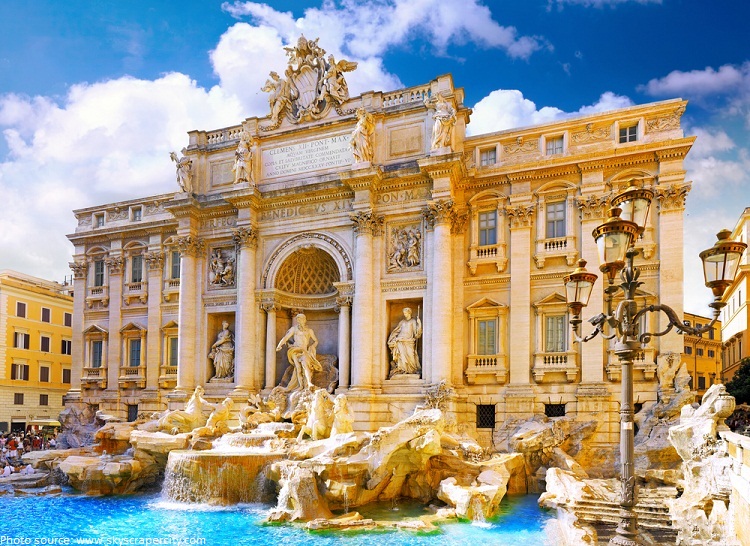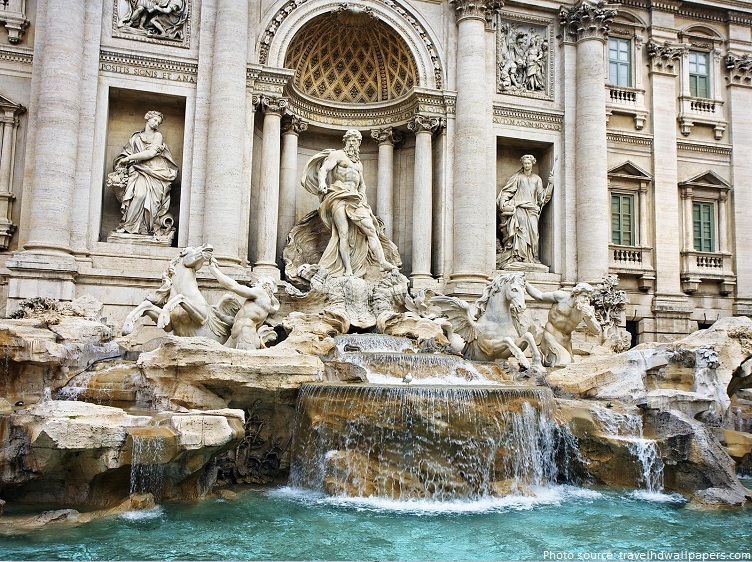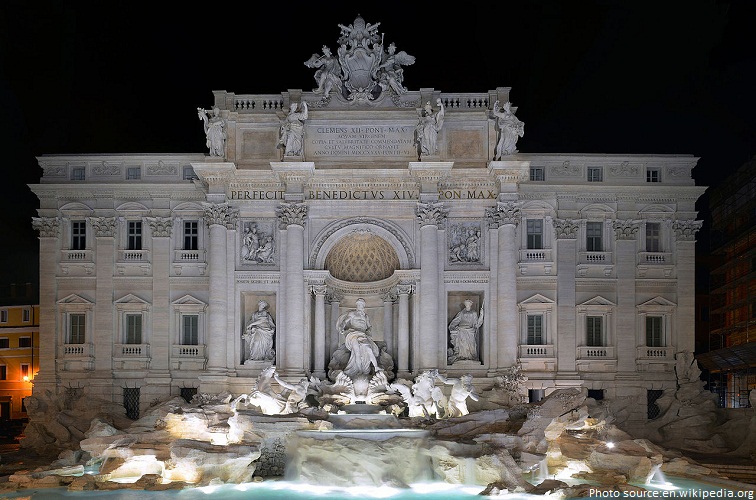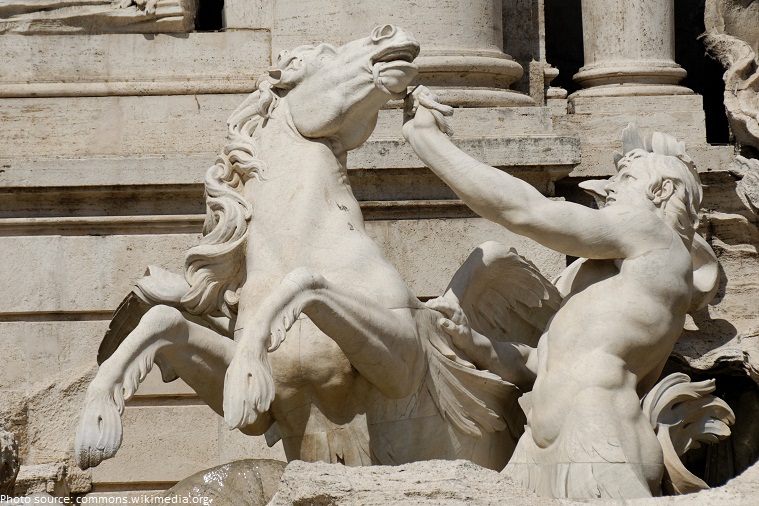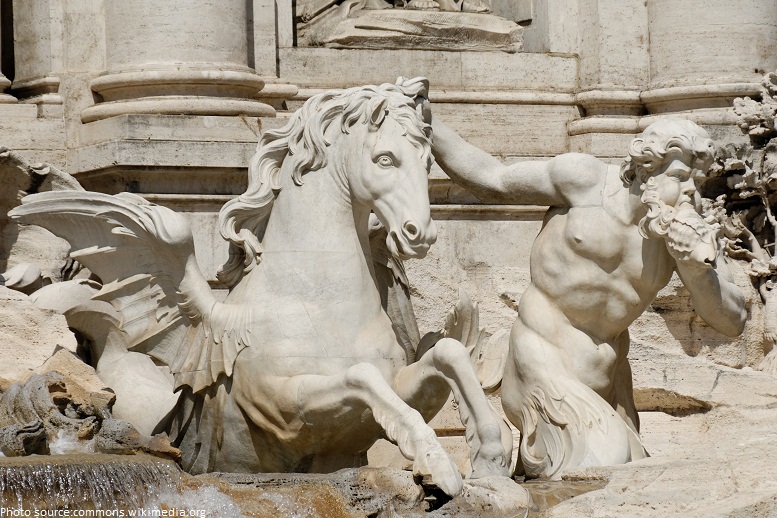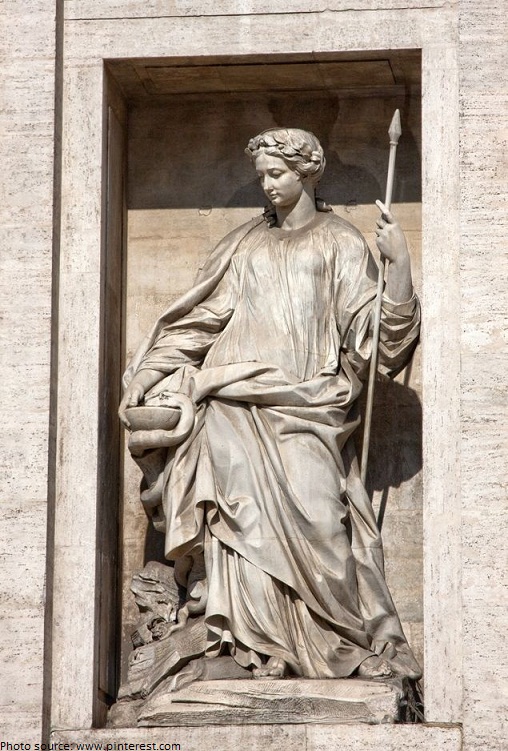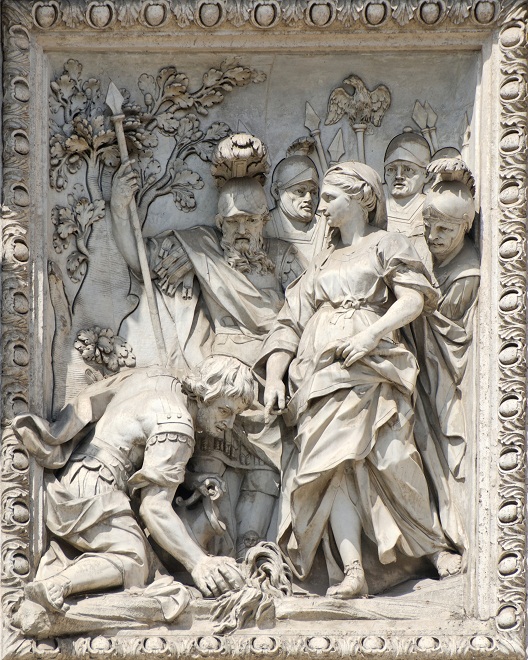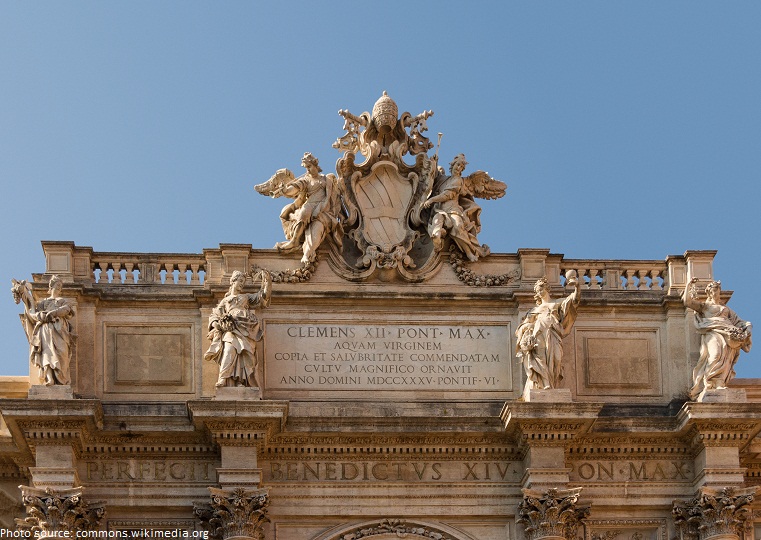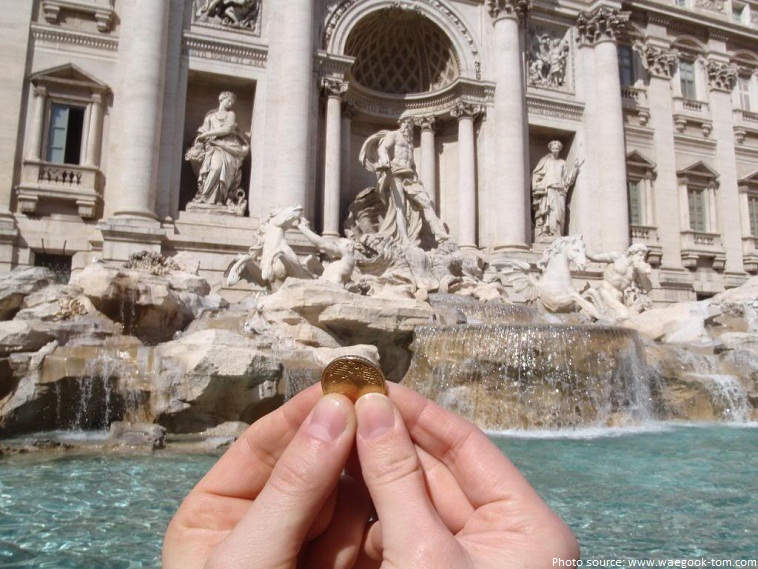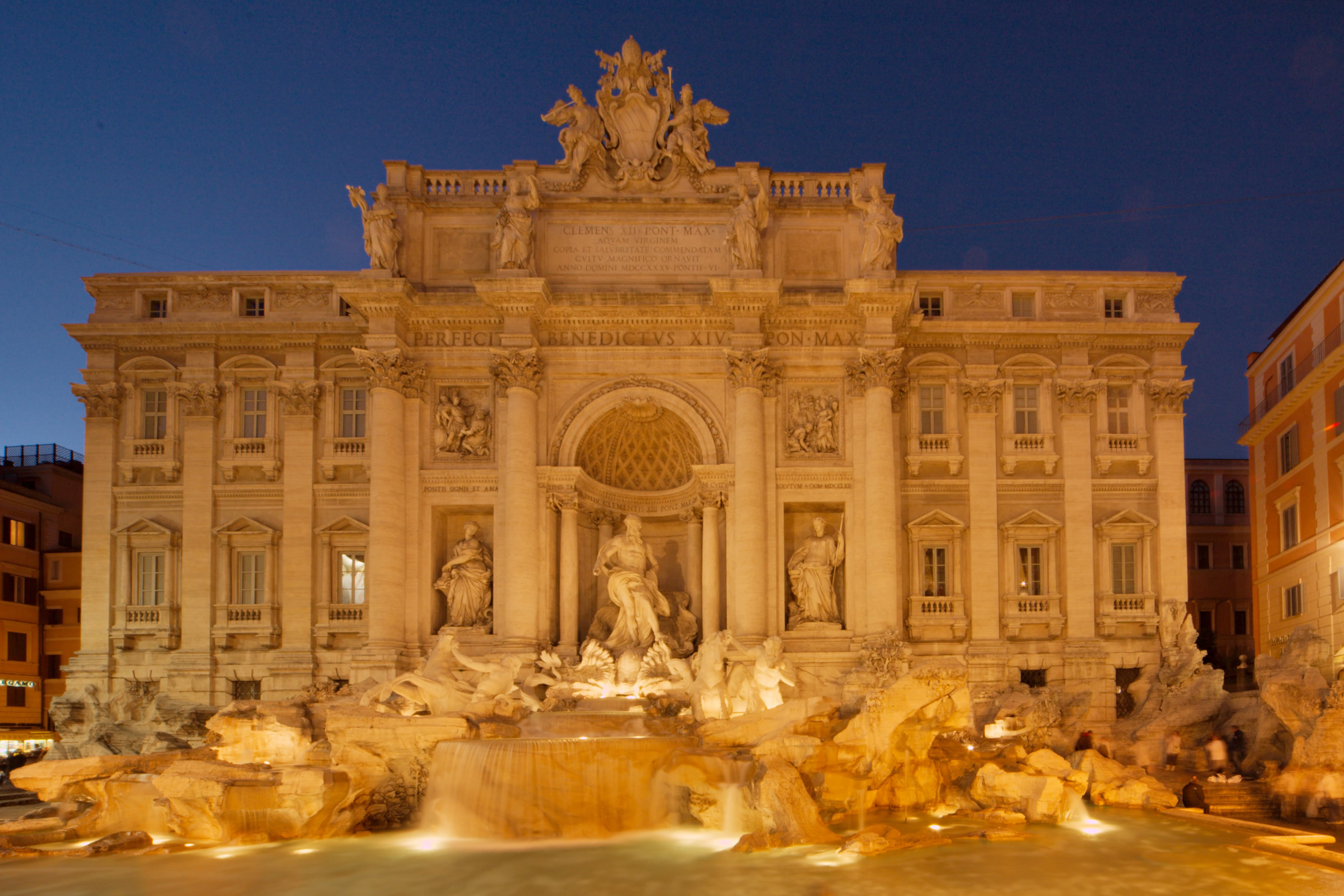The Fontana di Trevi or Trevi Fountain in English is a fountain in Rome, Italy.
The Trevi Fountain is one of the top attractions in Rome and one of the most famous fountains in the world.
The Trevi Fountain is situated at the end of the Aqua Virgo, an aqueduct constructed in 19 BC by Agrippa, the son-in-law of Emperor Octavian Augustus.
The fountain dates back to ancient Roman times, since the construction of the Aqua Virgo Aqueduct in 19 B.C. by Agrippa, the son-in-law of Emperor Octavian Augustus.Aqueduct provided water to the Roman baths and the fountains of central Rome.
The aqueduct brings water all the way from the Salone Springs approximately 21 kilometer (13 miles) from Rome.
In the 15th century there already was a small Trevi Fountain which was built during the papacy of Nicholas V.
In 1732, pope Clement XII commissioned Nicola Salvi to create a large fountain at the Trevi Square to replace the existing fountain.
The fountain took 30 years to build upon completion in 1762.
Nicola Salvi based his theatrical masterpiece on this design.He died in 1751 and never saw his monumental Baroque fountain completed. The fountain was completed by Pietro Bracci.
In 1762 different Pope, Clement XIII, officially completed and inaugurated the new Trevi Fountain, 11 years after Salvi’s death.
The fountain, which is designed like a monumental triumphal arch, was built against a wall of the Palazzo Poli.
The fountain is mostly built of travertine stone.It is a form of limestone deposited by mineral springs, especially hot springs.The name of this stone derives from the Latin adjective tiburtinus, which means from Tibur, the actula city of Tivoli, about 35 kilometers (22 miless) East of Rome.
Standing 26.3 meters (86 feet) high and 49.15 meters (161.3 feet) wide, it is the largest Baroque fountain in the city.
Every day it spills 80.000 cubic meter of water (2,824,800 cubic feet).Today the water of the fountain is recycled.
In the middle there is the statue of Ocean, 5,8 meters high (16.4 feet high).The beard of Ocean is symbol of wisdom and power. The wand is short and thick, similar to the ones held by Roman emperors portrayed in many ancient coins.
Ocean is carried on his triumphal chariot by two horses one horse is restless, one is calm.The restless horse represents the violent strength of the sea. The clam horse is instead symbol of tranquillity of the sea.
Two Tritons are leading the horses, one triton is strong and young, one is older and holds a twisted shell that is using to announce their passage.
Triton is a mythological Greek god, the messenger of the sea usually represented as a merman. He is the son of Neptune.
In the left part of the arch there is the statue of Abundance holding the horn of plenty. At her feet a toppled vase lies by a source of water. Goddess Abundance symbolizes good fortune and success.
Above her there is a relief showing Agrippa commanding his generals to build the aqueduct.
In the righ portion there is the statue of Health, crowned by a wreth of laurel and holding a cup a snake drinks from. In Greek, her name is Hygieia, the source of the word hygiene.
Above her there is a relief showing a Virgin lady indicating to soldiers the source of water.
The four allegorical statues located on the attic symbolize the four seasons.Crowning the top is the coat of arms of pope Clement XII.
The decorations of the fountain also feature around 30 species of plants located where the environment is more suitable to them.
The legend holds that a coin thrown into the fountain will ensure a return to Rome. This tradition also dates back to the ancient Romans who often threw coins in water to make the gods of water favor their journey or help them get back home safely.
Coins are purportedly meant to be thrown using the right hand over the left shoulder.
Every night about 3,000 Euros are swept up from the bottom of the basin. The money is donated to Caritas, a catholic charity, who uses the money to provide services for needy families in Rome.
Stealing coins from Trevi Fountain is illegal. In the past it was common for gangs of thieves to sweep the coins out of the fountain at night.One man stole the coins from the fountain for 34 years before he was caught in the summer of 2002.
The most accepted explanation for the word Trevi is that it derives for the Latin word Trivium that indicates a crossing of three streets.
The three streets of Trevi are Via De’ Crocicchi, Via Poli and Via Delle Muratte.
The fountain was refurbished in 1998 and 2014/2015 when restoration included the installation of more than 100 LED lights to improve the nighttime illumination of the fountain.
In 1996 the fountain was turned off and draped in black crepe in honour of recently deceased actor Marcello Mastroianni who had filmed a famous scene there in La Dolce Vita.
During construction many men were injured and a few died when working with enormous stone, including a stonecutter who was crushed by a large block of travertine in 1734.
The Trevi fountain project was financed by the revenues from the re-intruduction of the Lotto game in Rome. The numbers of the first extraction on February 14th 1972 were 56, 11, 54, 18, 6.
Some believe that the central figure Oceanus is Neptune. But Neptune has often a triton in his hands and a dolphin following him. Also its designer Nicola Salvi wrote, the statue is an image of Ocean, the personification of a immense river that flows around the Earth and from which all strams of water derive.

